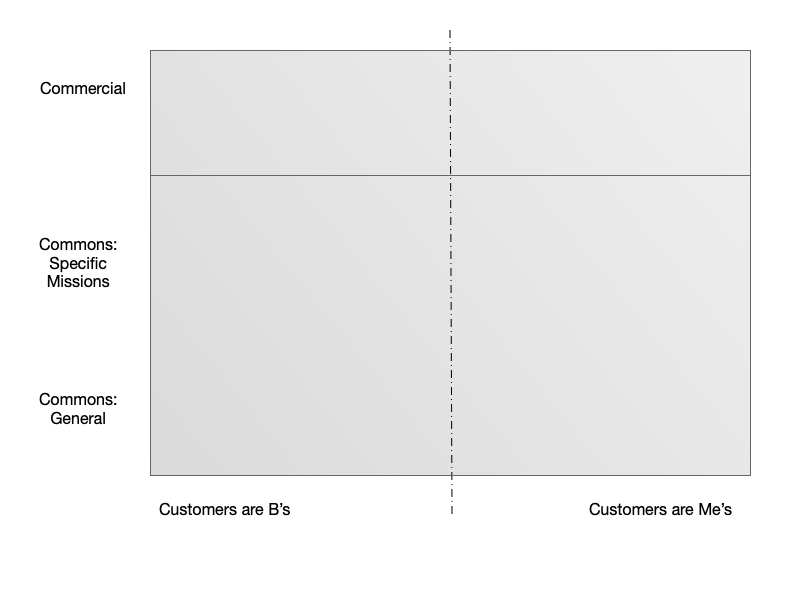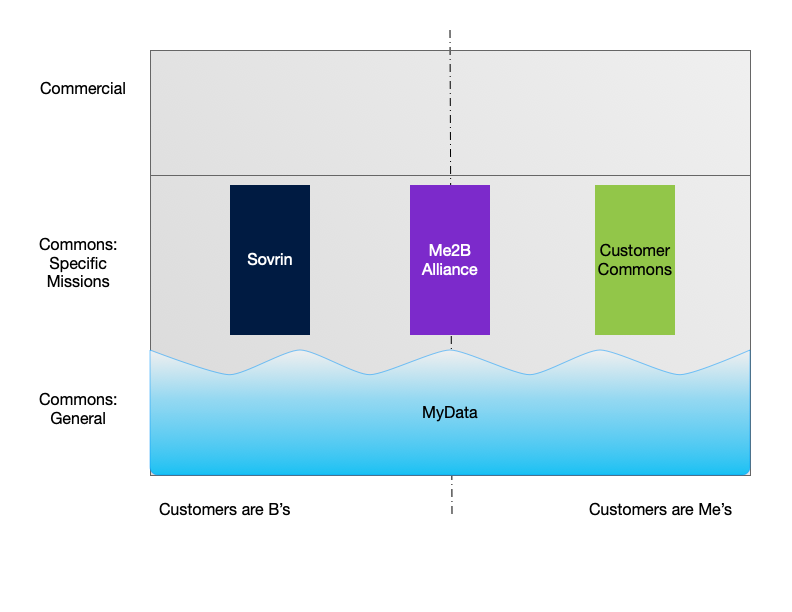2020-01-07
Personal Data Organization Landscape
https://reb00ted.org/tech/20200107-personal-data-landscape/
Personal data is becoming a thing in 2020. Not just startups, but also not-for-profit organiations have been popping up everywhere … by some count, there are now literally hundreds (!) that are involved in it somehow. It’s hard not to get lost.
To order my own thoughts, and for the purposes of some organizations that I’m involved in, I’ve been working on a 2x2 or 3x3-style matrix diagram that similar to what many startups are using to position themselves with potential investors.
Here is my currently best draft. Would love your feedback and ideas!

The first question is: if we can only pick two axes by which to classify organizations, which are the most important ones? I’ve picked:
- whether organizations are for-profit, or help building the commons. This is obviously a big difference. I’m also distinguishing between organizations working broadly across the space, or focused on a particular aspect of it.
- who is the primary customer of the organization? As personal data touches both individuals and businesses (or Me’s and B’s as we call it in Me2BA), organizations might focus on either, or both, and that has many practical differences just like B2B and B2C businesses are different. For this diagram, “customers” mean the entities that provide money to the organization, through membership fees, or who buy the product or services. (They may also have benefits for the other side, but that’s probably common for most of them so it’s not shown here.)

Now, let’s put some example organizations into the diagram and see how they fit.
- MyData has both business and individual members. It is a very broad umbrella organization, and so I am putting it stretching from B to Me, with a somewhat fuzzy border between general and specific focus. (One could have specific tendrils going out and up in the diagram, like the recent MyData Operators group.)
- The Sovrin Foundation, which runs the epynomous digital identity network, has only businesses as its members, so I put them on the left. It is focused on something much more specific than, say, MyData, and so it goes further up in the diagram.
- Customer Commons is an advocacy organization for (non-business) customers. It has a specific focus in mission and only focuses on consumers, thus it is in the middle on the right.
- The Me2B Alliance strives to improve the relationship between businesses and individuals, and – once its membership structure is fully defined – will have both business and individual members, so I put it in the middle.
Does this make sense?
![[Logo]](https://reb00ted.org/assets/logo.png)